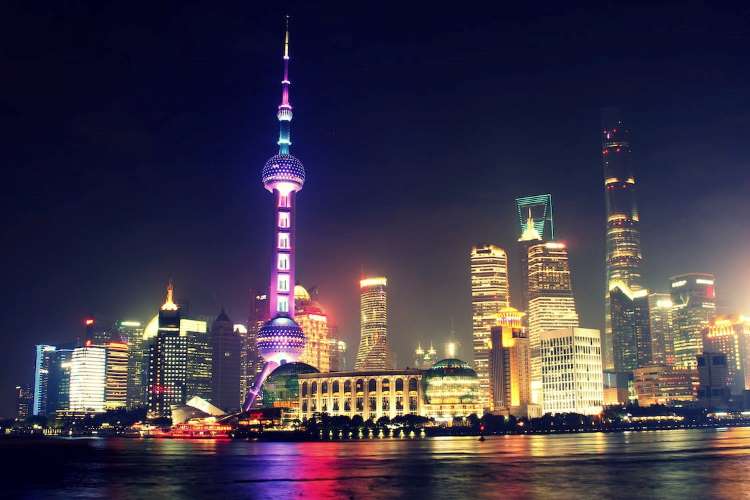
The Chinese economy has been slowing for some time now. A recent report emphasised that a generational slowdown in China is arguably of much greater importance for the long-term global outlook. What that means is any dent to the Chinese economy spells big trouble for the rest of the world.
Recent macroeconomic data have been dismal and the trend may continue in the September quarter. Consumption is projected to be even weaker and the disruptions caused by the coronavirus pandemic have intensified. This happened mainly because a cautious China is keeping its cities in lockdowns. And with the cities shut, spending on high-contact services such as retail and leisure will suffer again.
READ | Another jumbo interest rate hike by Fed may land the world in recession
The government had even placed intra-province travel restrictions until the end of October. October also marks festivities in China and the restrictions coincide with the Golden Week National Holiday in the first week of October. This will further limit the scope for an immediate economic recovery even as the wave of infections subsides.
Is China too big to fail
China’s economic success between 1981 and 2021 has been remarkable. The biggest contributor to the Chinese miracle was booming exports which grew from 7.4% of the country’s GDP in 1981 to 20% in 2021. The country’s share of global exports from 0.6% to 13% during the period.
In the last several years China has been trying to reduce its dependence on exports. China was responsible for a third of the combined global trade deficit of US$1.4 trillion in 2021. China is currently boosting internal circulation by improving the cycle of production, distribution and consumption.
Experts have also been lowering GDP growth forecasts for the country, sending policymaking circles in Beijing into a frenzy. While the conventional response to such a weakness would be to loosen policy, policymakers in China are found to be operating in constraints. The threats are real – the dollar is surging and an overt weakening of the yuan could encourage capital outflows which would, in turn, destabilise the domestic financial system.
China is the world’s second largest economy. China’s GDP has grown from 8.5 trillion in 2012 to nearly 17 trillion in 2021. The country also accounted for over 18% of global output in 2021.
The World Bank in its latest report said that it expects developing economies in East Asia to grow at a faster rate than China this year — a first time since 1990. China is struggling with a real-estate crash and the government’s zero-tolerance approach to the Covid-19 pandemic. This has made analysts sceptical of its growth prospects and cut growth projection from 4.3% in June to 2.8% in the latest report.
China is expected to bear huge economic costs of its zero-tolerance to the pandemic. Consumers are also losing confidence in a market heavily plagued by a severe real-estate downturn, with sales, prices and construction activity all falling as developers drowning in debts.
That is not all. Recent data points to potholes which are too big to go unnoticed. Growth has stalled, youth employment is at an all-time high, housing market is in shambles and manufacturers find themselves in constant supply-chain headache. To top it all, the recent fluctuations in climate have also served China badly as the country went under a dry spell. In the meantime, a sharp slowdown in the global economy doesn’t bode well for China’s growth either. This means a weakening in demand from the US and European markets which will weigh on China’s exports.
Yuan hits record low
China’s economic problems can be gauged by the fact that the country’s currency yuan has tumbled to a record low against the dollar in offshore trading. However, the yuan is not the only currency which has fallen in the current period. In fact, it has joined a host of currencies including Indian rupee which have experienced sharp declines against the greenback. The declines come despite China’s central bank’s efforts to stem the yuan’s decline by making it more expensive to bet against the currency.
The offshore yuan, which is traded outside mainland China, fell to 7.2386 against the dollar on Wednesday, the lowest since Beijing eased rules on trading the currency in Hong Kong in 2010. On the other hand, the onshore yuan which is circulated in mainland China and more tightly controlled than its offshore counterpart, also hit a fresh low of 7.2302 per dollar in early trade, the weakest since the global financial crisis in 2008.
Experts say Chinese economy still going strong
Many economists have a strong faith in the Chinese story and are of the opinion that the Chinese economy is on track to a steady recovery. This is because of the gradual normalisation of activities and strong policy support. They also point to the profits of China’s major industrial companies which declined at a slower pace in August. The year-on-year contraction was narrower compared with the previous month.
READ | DPCO 2013: Delhi High Court rejects NPPA interpretation on price monitoring
China has reported better-than-expected economic numbers in August including consumption and investment which, if analysts are to be believed, point to a critical juncture in terms of economic recovery.
The recent economic slowdown in China drew comparisons with Japan, which was the fastest growing economy in 1960s, 70s and 80s. Unlike Japan, China doesn’t face a limited domestic demand. The tech industry in Japan was not large enough to generate enough revenues to fund research and development investments. China’s large domestic market and robust investments can drive growth in the coming years.
Anil Nair is Founder and Editor, Policy Circle.

